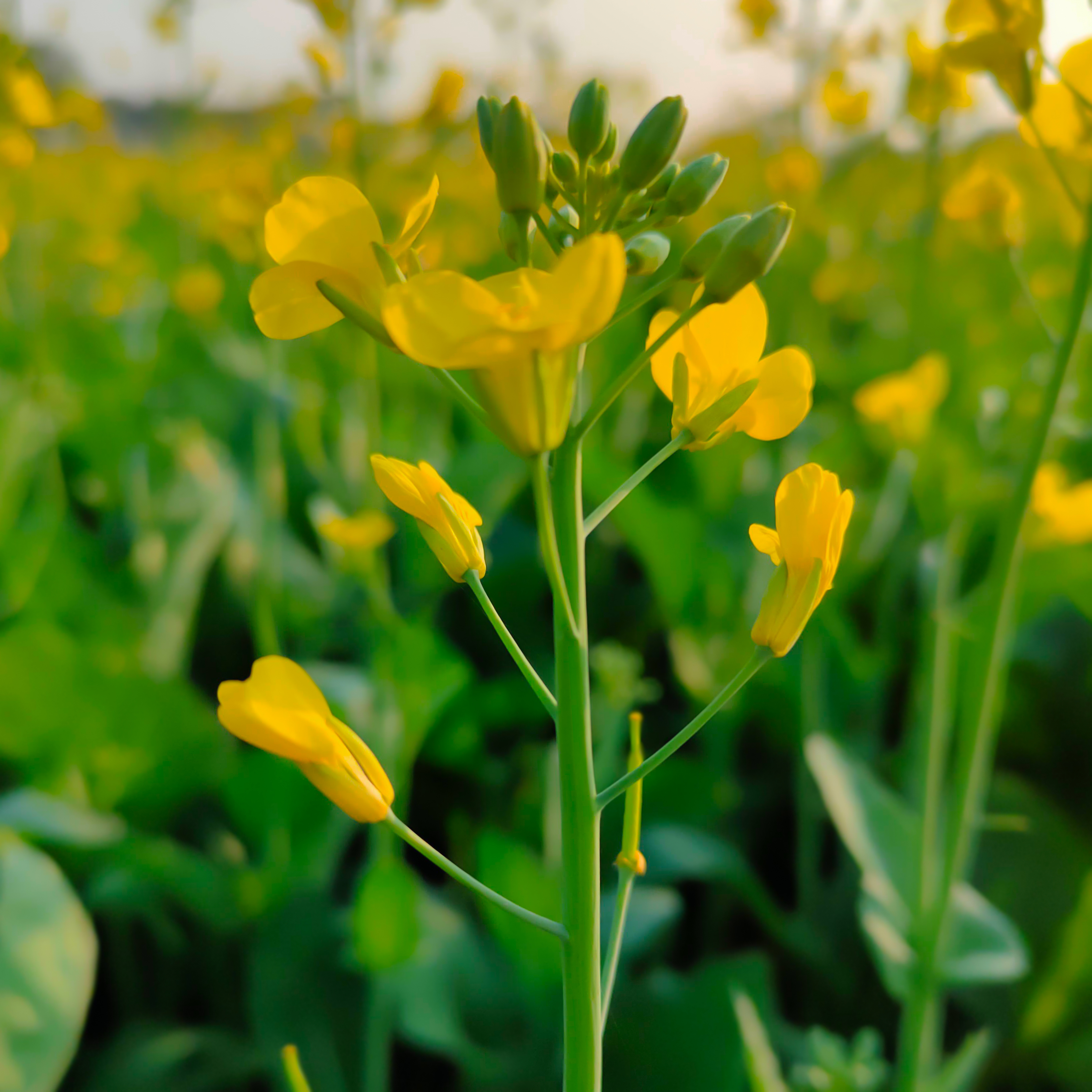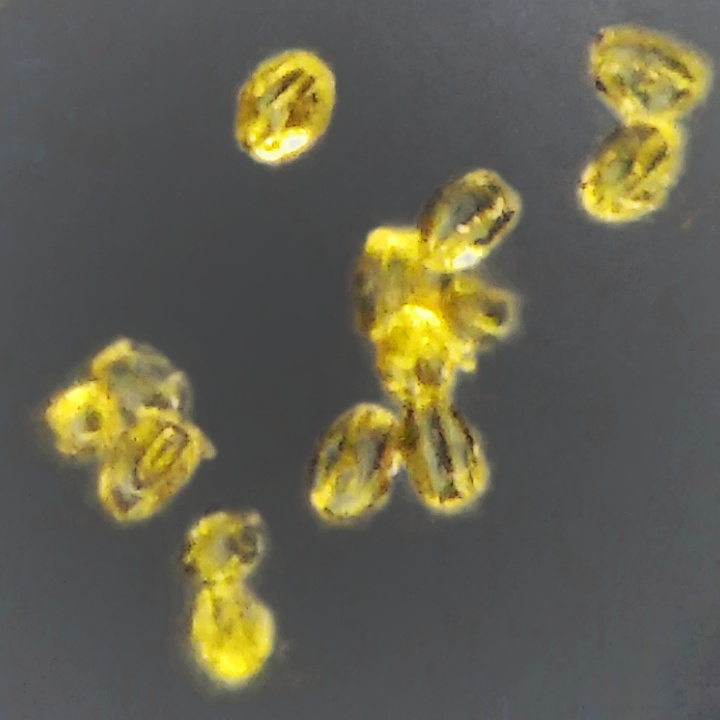|
Pratylenchus Zeae
''Pratylenchus zeae'' is a plant-pathogenic nematode found on potatoes, maize, cereal, tobacco, coffee, blackberry, and found most often on sugarcane. Morphology Female is slender, 0.4–0.55 mm long. Body almost straight when heated. Low and flat lip region. Labial region not offset from the body. Short and strong stylet with well- developed basal knobs. Conical, rounded tail. Esophagus overlaps ventrally. Monovarial, oviduct indistinct, prodelphic and short uterus. Phasmids slightly posterior to mid-tail. Male is extremely rare, not essential for reproduction. Similar to female except for sexual dimorphism. Spicules slender.Castillo, Pablo, Vovlas, Nicola (2007). ''Nematology Monographs and Perspectives'', Volume 6 : ''Pratylenchus'' (Nematoda : Pratylenchidae) : Diagnosis, Biology, Pathogenicity and Management. Brill Academic Publishers. Economic importance Nematode becomes a concern to farmers when the number feeding on the roots exceeds a certain threshold, above ... [...More Info...] [...Related Items...] OR: [Wikipedia] [Google] [Baidu] |
Nematode
The nematodes ( or ; ; ), roundworms or eelworms constitute the phylum Nematoda. Species in the phylum inhabit a broad range of environments. Most species are free-living, feeding on microorganisms, but many are parasitic. Parasitic worms (helminths) are the cause of soil-transmitted helminthiases. They are classified along with arthropods, tardigrades and other moulting animals in the clade Ecdysozoa. Unlike the flatworms, nematodes have a tubular digestive system, with openings at both ends. Like tardigrades, they have a reduced number of Hox genes, but their sister phylum Nematomorpha has kept the ancestral protostome Hox genotype, which shows that the reduction has occurred within the nematode phylum. Nematode species can be difficult to distinguish from one another. Consequently, estimates of the number of nematode species are uncertain. A 2013 survey of animal biodiversity suggested there are over 25,000. Estimates of the total number of extant species are su ... [...More Info...] [...Related Items...] OR: [Wikipedia] [Google] [Baidu] |
Legume
Legumes are plants in the pea family Fabaceae (or Leguminosae), or the fruit or seeds of such plants. When used as a dry grain for human consumption, the seeds are also called pulses. Legumes are grown agriculturally, primarily for human consumption, but also as livestock forage and silage, and as soil-enhancing green manure. Legumes produce a botanically unique type of fruit – a simple fruit, simple Dry fruits, dry fruit that develops from a simple carpel and usually Dehiscence (botany) , dehisces (opens along a seam) on two sides. Most legumes have Symbiosis , symbiotic nitrogen fixation , nitrogen-fixing bacteria, Rhizobia, in structures called root nodules. Some of the fixed nitrogen becomes available to later crops, so legumes play a key role in crop rotation. Terminology The term ''pulse'', as used by the United Nations' Food and Agriculture Organization (FAO), is reserved for legume crops harvested solely for the dry seed. This excludes green beans and Pea , green ... [...More Info...] [...Related Items...] OR: [Wikipedia] [Google] [Baidu] |
Plant Pathogenic Nematodes
Plants are the eukaryotes that form the kingdom Plantae; they are predominantly photosynthetic. This means that they obtain their energy from sunlight, using chloroplasts derived from endosymbiosis with cyanobacteria to produce sugars from carbon dioxide and water, using the green pigment chlorophyll. Exceptions are parasitic plants that have lost the genes for chlorophyll and photosynthesis, and obtain their energy from other plants or fungi. Most plants are multicellular, except for some green algae. Historically, as in Aristotle's biology, the plant kingdom encompassed all living things that were not animals, and included algae and fungi. Definitions have narrowed since then; current definitions exclude fungi and some of the algae. By the definition used in this article, plants form the clade Viridiplantae (green plants), which consists of the green algae and the embryophytes or land plants (hornworts, liverworts, mosses, lycophytes, ferns, conifers and other gymnosperm ... [...More Info...] [...Related Items...] OR: [Wikipedia] [Google] [Baidu] |
Pratylenchus
''Pratylenchus'' is a genus of nematodes known commonly as lesion nematodes.Crow, W. TAmaryllis lesion nematode, ''Pratylenchus hippeastri''.EENY-546. University of Florida IFAS. 2012. They are parasitism, parasitic on plants and are responsible for root lesion disease on many taxa of host (organism), host plants in temperate climate, temperate regions around the world. Lesion nematodes are migratory endoparasites that feed and reproduce in the root and move around, unlike the Heterodera, cyst or root-knot nematodes, which may stay in one place. They usually only feed on the cortex of the root.Lesion nematodes. University of Illinois Extension. 1999. Species are distinguished primarily by the morphology (biology), morphology of the stylet (anatomy), stylets.Norton, D. C. ''Ecology of Plant-Parasitic Nematod ... [...More Info...] [...Related Items...] OR: [Wikipedia] [Google] [Baidu] |
Nematicides
A nematicide is a type of chemical pesticide used to kill plant-parasitic nematodes. Nematicides have tended to be broad-spectrum toxicants possessing high volatility or other properties promoting migration through the soil. Aldicarb (Temik), a carbamate insecticide marketed by Bayer CropScience, is an example of a commonly used commercial nematicide. It is important in potato production, where it has been used for control of soil-borne nematodes. Aldicarb is a cholinesterase inhibitor, which prevents the breakdown of acetylcholine in the synapse. In case of severe poisoning, the victim dies of respiratory failure. It is no longer authorised for use in the EU and, in August 2010, Bayer CropScience announced that it planned to discontinue aldicarb by 2014. Human health safety and environmental concerns have resulted in the widespread deregistration of several other agronomically important nematicides. Prior to 1985, the persistent halocarbon DBCP was a widely used nematicide and soi ... [...More Info...] [...Related Items...] OR: [Wikipedia] [Google] [Baidu] |
Mahua (plant)
''Madhuca longifolia'' is an Indian tropical tree found largely in the central, southern, north Indian plains and forests, Bangladesh, Nepal, Myanmar and Sri Lanka. It is commonly known as madhūka, mahura, , mahuwa, Butter Tree, mahura, mahwa, , Iluppai, Mee or Ippa-chettu. It is a fast-growing tree that grows to approximately 20 meters in height, possesses evergreen or semi-evergreen foliage, and belongs to the family Sapotaceae. It is adaptable to arid environments, being a prominent tree in tropical mixed deciduous forests in India in the states of Maharashtra, Odisha, Chhattisgarh, Jharkhand, Uttar Pradesh, Bihar, Andhra Pradesh, Madhya Pradesh, Kerala, Gujarat, West Bengal and Tamil Nadu. Uses It is cultivated in warm and humid regions for its oleaginous seeds (producing between 20 and 200 kg of seeds annually per tree, depending on maturity), flowers and wood. The fat (solid at ambient temperature) is used for the care of the skin, to manufacture soap or detergents, an ... [...More Info...] [...Related Items...] OR: [Wikipedia] [Google] [Baidu] |
Peanut
The peanut (''Arachis hypogaea''), also known as the groundnut, goober (US), goober pea, pindar (US) or monkey nut (UK), is a legume crop grown mainly for its edible seeds. It is widely grown in the tropics and subtropics by small and large commercial producers, both as a grain legume and as an oil crop. Atypically among legumes, peanut pods geocarpy, develop underground; this led botanist Carl Linnaeus to name peanuts ''hypogaea'', which means "under the earth". The peanut belongs to the botanical family Fabaceae (or Leguminosae), commonly known as the legume, bean, or pea family. Like most other legumes, peanuts harbor symbiotic nitrogen-fixing bacteria in root nodules, which improve soil fertility, making them valuable in crop rotations. Despite not meeting the Botanical nut, botanical definition of a nut as "a fruit whose ovary (botany), ovary wall becomes hard at maturity," peanuts are usually categorized as nuts for culinary purposes and in common English. Some pe ... [...More Info...] [...Related Items...] OR: [Wikipedia] [Google] [Baidu] |
Mustard Plant
The mustard plant is any one of several plant species in the genera ''Brassica'', ''Rhamphospermum'' and ''Sinapis'' in the family Brassicaceae (the mustard family). Mustard seed is used as a spice. Grinding and mixing the seeds with water, vinegar, or other liquids creates the yellow condiment known as Mustard (condiment), prepared mustard. The seeds can also be pressed to make mustard oil, and the edible leaves can be eaten as Brassica juncea, mustard greens. Many vegetables are cultivated varieties of mustard plants; domestication may have begun 6,000 years ago. History Although some varieties of mustard plants were well-established crops in Hellenistic and Roman Empire, Roman times, Daniel Zohary, Zohary and Hopf note, "There are almost no Archaeology, archeological records available for any of these crops." Wild forms of mustard and its relatives, the radish and turnip, can be found over West Asia and Europe, suggesting their domestication took place somewhere in that ar ... [...More Info...] [...Related Items...] OR: [Wikipedia] [Google] [Baidu] |
Karanj (plant)
Karanj or Karenj may refer to: * Karanj, Kohgiluyeh and Boyer-Ahmad, Iran * Karanj, Dezful, Khuzestan Province, Iran * Karanj, Izeh, Khuzestan Province, Iran * Karanj (Vidhan Sabha constituency), Gujarat, India * Karanj (), ''Pongamia pinnata ''Pongamia pinnata'' is a species of tree in the pea family, Fabaceae, native to eastern and tropical Asia, Australia, and the Pacific islands. It is the sole species in genus ''Pongamia''. It is often known by the synonym ''Millettia pinnata''. ...'', a species of tree in the pea family, Fabaceae, native to Asia * INS ''Karanj'' (S21), a diesel-electric submarine of the Indian Navy See also * Karanja (other) {{disambig, geo ... [...More Info...] [...Related Items...] OR: [Wikipedia] [Google] [Baidu] |
Neem
''Azadirachta indica'', commonly known as neem, margosa, nimtree or Indian lilac, is a tree in the mahogany family Meliaceae. It is one of the two species in the genus '' Azadirachta''. It is native to the Indian subcontinent and to parts of Southeast Asia, but is naturalized and grown around the world in tropical and subtropical areas. Its fruits and seeds are the source of neem oil. ''Nim'' is a Hindustani noun derived from Sanskrit ''nimba'' (). Description Margosa is a fast-growing tree that can reach a height of , and rarely . It is evergreen, shedding many of its leaves during the dry winter months. The branches are wide and spreading. The fairly dense crown is roundish and may reach a diameter of . The opposite, pinnate leaves are long, with 20 to 30 medium to dark green leaflets about long. The terminal leaflet often is missing. The petioles are short. White and fragrant flowers are arranged in more-or-less drooping axillary panicles which are up to long. The i ... [...More Info...] [...Related Items...] OR: [Wikipedia] [Google] [Baidu] |
Ratoon
Ratooning is the agricultural practice of harvesting a monocot crop by cutting most of the above-ground portion but leaving the roots and the growing shoot apices intact so as to allow the plants to recover and produce a fresh crop in the next season. This practice is widely used in the cultivation of crops such as rice, sugarcane, banana, and pineapple. Ratoon crops cannot be perennially renewed, and may be harvested only for a few seasons, as a decline in yield tends to occur due to increased crowding, damage by pests and diseases, and decreasing soil fertility. History The earliest record for ratooning, in a crop plant, can be traced back to the Vedic period in India. The ''Atharvaveda'' mentions that farmers cultivating barley (''yava'') used to cut barley plants many a time (20/125/2, Richa or Shloka No. 5755). Chinese records of sugarcane ratooning exist from 1757, in Fujian Province. Etymology The word ''ratoon'' probably owes its origin either from the Latin words , mea ... [...More Info...] [...Related Items...] OR: [Wikipedia] [Google] [Baidu] |
Blackberry
BlackBerry is a discontinued brand of handheld devices and related mobile services, originally developed and maintained by the Canadian company Research In Motion (RIM, later known as BlackBerry Limited) until 2016. The first BlackBerry device launched in 1999 in North America, running on the Mobitex network (later also DataTAC) and became very popular because of its "always on" state and ability to send and receive email messages wirelessly. The BlackBerry pioneered push notifications and popularized the practise of " thumb typing" using its QWERTY keyboard, something that would become a trademark feature of the line. In its early years, the BlackBerry proved to be a major advantage over the (typically) one-way communication pagers and it also removed the need for users to tether to personal computers. It became especially used in the corporate world in the US and Canada. RIM debuted the BlackBerry in Europe in September 2001, but it had less appeal there where text mess ... [...More Info...] [...Related Items...] OR: [Wikipedia] [Google] [Baidu] |







